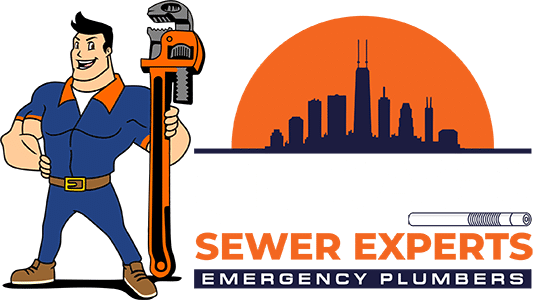Traditional pipe repair and replacement processes can be time-consuming, expensive, and disruptive. Excavation and the resulting mess are often major drawbacks for both residential and commercial property owners. However, recent advancements in plumbing technology led to the development of trenchless pipe repair, an innovative alternative that provides efficient and minimally invasive solutions to pipe problems. Trenchless pipe repair is rapidly becoming the preferred method for pipe maintenance in the plumbing industry, providing significant benefits over traditional techniques.
Trenchless pipe repair encompasses various methods like pipe bursting, pipe lining, and cured-in-place pipe (CIPP), all designed to repair or replace damaged sewer lines without the need for large-scale excavation. These highly effective approaches not only deliver long-lasting results but also safeguard your property from the extensive disturbances associated with traditional repair methods. As a result, more and more homeowners and businesses in the greater Chicago area are opting for trenchless pipe repair services offered by experienced professionals like Chicago Sewer Experts.
In this informative article, we’ll delve into the numerous benefits of trenchless pipe repair for both residential and commercial properties and outline the most common methods utilized in the process. We’ll discuss why trenchless technology is the future of plumbing and demonstrate the importance of partnering with skilled technicians like Chicago Sewer Experts to ensure a seamless and efficient pipe repair experience.
Benefits of Trenchless Pipe Repair
1. Minimal Disruption and Damage
One of the significant advantages of trenchless pipe repair is the minimal disruption it causes to your property compared to traditional techniques. With trenchless methods, there’s no need to dig large trenches or remove vast amounts of soil. This means less damage to your landscaping, driveways, sidewalks, and other structures while still effectively repairing or replacing damaged sewer pipes.
2. Time and Cost Efficiency
Trenchless pipe repair is generally quicker and more cost-effective than traditional excavation-based methods. The need for heavy machinery and extensive labor is reduced, which translates into lower overall project costs for property owners. Additionally, the faster repair process results in less downtime for your plumbing system, allowing you to get back to your normal routine sooner.
3. Improved Pipe Performance and Durability
Trenchless pipe repair employs advanced materials and techniques that provide enhanced performance and durability compared to traditional methods. For example, the cured-in-place pipe (CIPP) lining method creates a seamless, jointless pipe within the existing damaged pipe. This new pipe is corrosion-resistant and can efficiently prevent tree root intrusion, resulting in a longer-lasting solution that often outperforms the original pipe.
4. Environmentally Friendly and Sustainable
The minimally invasive nature of trenchless pipe repair makes it a more environmentally friendly option for plumbing maintenance. The process results in less disturbance to your property and reduces the amount of earth moved, which can help preserve ecosystems and minimize potential damage to the surrounding environment.
Trenchless Pipe Repair Methods
1. Pipe Bursting
Pipe bursting is a trenchless pipe replacement method that involves breaking apart the existing damaged pipe while simultaneously pulling a new pipe through the void created. A hydraulic machine with a bursting head is used to fracture the old pipe and make way for the new one. This method is particularly effective for replacing pipes that are too damaged for pipe lining or those with significant root intrusion.
2. Pipe Lining
Pipe lining, also known as slip lining or CIPP lining, involves inserting a flexible pipe liner into the damaged pipe and securing it in place using specialized epoxy resin. Once the resin hardens, the lining creates a smooth, seamless, and durable new pipe within the existing one. This method is suitable for repairing pipes with minor damage, cracks, or leaks.
3. Cured-In-Place Pipe (CIPP)
The CIPP method is a popular form of trenchless pipe repair that involves inserting a resin-saturated, flexible liner into the damaged pipe and curing it in place using heat or ultraviolet light. The result is a new, jointless pipe that is resistant to corrosion and root intrusion. The CIPP method can be used to repair a variety of underground pipes, including sewer lines and storm drains.
Why Choose Chicago Sewer Experts for Trenchless Pipe Repair Services
When it comes to trenchless pipe repair in the greater Chicago area, trust the experts at Chicago Sewer Experts. Our experienced team understands the complications that can arise when dealing with damaged pipes and will work diligently to provide the best possible solutions for your unique situation. We offer comprehensive trenchless repair services, from inspection and diagnosis to repair and maintenance, ensuring a stress-free experience for property owners.
Conclusion
Trenchless pipe repair represents the future of plumbing, offering an efficient, cost-effective, and eco-friendly solution for repairing damaged sewer lines. By understanding its benefits and methods, property owners can make informed decisions about their plumbing maintenance and protect their homes or commercial properties from costly damage and disruptions. Choose Chicago Sewer Experts for expert trenchless pipe repair services in the greater Chicago area. Contact us today to schedule an appointment and safeguard your Chicago plumbing system.

Recent Comments